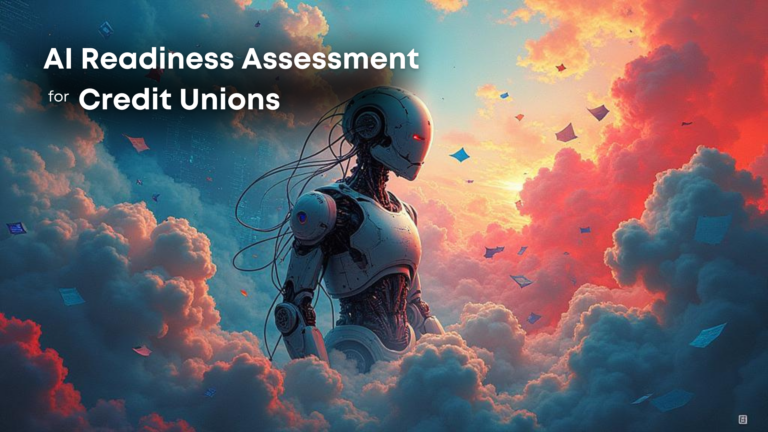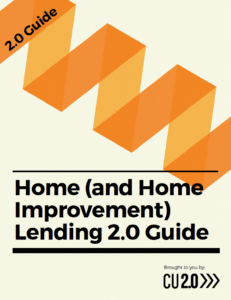This assessment may help you understand how prepared your credit union is to adopt AI technologies.
Is it perfect? Well… Is it comprehensive? Nooo. Is it a darn good start? You bet!
Please select the option that best describes your current situation for each question. You may see where you’re doing well and where there might be room for improvement.
If you want to score yourself, use the following rubric:
A = 0 points
B = 1 point
C = 2 points
D = 3 points
At the conclusion, you should have between 0 and 45 points total. We’ll tell you what that means then.
Key Resources for Each Stage:
- Credit union AI policy
- Make a user profile on Senso’s CUCopilot network
- Discuss AI use cases and possibilities specific to your credit union
- Share your expertise with others
Download the assessment to share with your leadership team here:
Section 1: Organizational Readiness
- Strategic alignment and leadership support
Does your leadership and board prioritize and integrate AI into your strategic planning?
- AI is minimally or not recognized or prioritized by leadership or the board.
- AI is acknowledged but not actively integrated into strategic planning.
- AI is included in strategic planning with clear initiatives underway.
- AI is central to our vision, with full commitment and resources directed toward AI initiatives.
- Organizational readiness
How prepared are you to manage the cultural and operational changes required for AI?
- Few or no preparation or plans for managing changes associated with AI.
- Initial awareness with plans being developed for change management.
- Active implementation of change management strategies for AI adoption.
- Ongoing initiatives have established a culture that embraces AI and continuous innovation.
- Policy readiness, including data use and ethics
How well might your policies support AI initiatives, including ethical considerations like fairness and transparency?
- Policies do not or barely support AI and lack provisions for data use and ethics.
- Policies are being reviewed and updated to address AI and ethical concerns.
- Policies support AI initiatives with guidelines for data use and ethics.
- Policies fully support AI with comprehensive, enforced guidelines ensuring ethical use and compliance.
- Staff readiness and engagement
How ready and engaged is your staff in adopting and contributing to AI-driven processes?
- Staff are relatively unprepared and uninvolved in AI initiatives.
- Some staff have basic awareness; engagement is limited.
- Majority of staff are trained and participating in AI-related projects.
- Staff are highly engaged, with widespread understanding and active contributions to AI efforts.
- Readiness for AI-driven decision-making and Automation
Are your processes ready to integrate AI-driven decision-making and automation?
- Processes are largely manual with little or no capacity for AI integration.
- Some processes are being modified to incorporate AI elements.
- Many processes are optimized for AI integration, improving efficiency.
- Processes are fully designed for seamless AI integration across all operations.
Section 2: Technology Readiness
- Core systems and infrastructure
Does your core support AI integration, including scalability and security?
- Core systems may not support AI; infrastructure isn’t scalable or secure for AI demands.
- Core systems may require updates or workarounds; infrastructure has limited or moderate scalability and basic security measures.
- Core systems support AI; infrastructure is scalable and secure.
- Core systems are optimized for AI; infrastructure is highly scalable and secure, optimized for AI expansion and data protection.
- Data management and analytics
Can you support AI-driven analytics with your existing data management and analytics capabilities?
- Data systems may be inadequate; little or no predictive analytics or AI capabilities in place.
- Data systems have limitations; basic analytics with limited AI-driven insights.
- Data management supports AI analytics; advanced analytics utilizing some AI for predictive insights.
- Advanced data systems enable real-time AI analytics and highly accurate, actionable member insights.
- Digital platforms integration
Are your mobile and online platforms AI ready? Are your systems well connected?
- Platforms don’t support AI features; systems are siloed, hindering AI integration.
- AI features may be present but limited; systems are partially integrated with barriers.
- Platforms use some AI and are ready for more; systems are well-integrated and connected to support an AI future.
- Everything is fully AI-powered where appropriate; fully integrated systems enable seamless AI functionality across the organization.
- AI in fraud detection and risk management
How advanced are your AI capabilities in enhancing fraud detection and risk management?
- AI isn’t used for fraud detection or risk management.
- AI is used for some fraud detection and risk management.
- AI is used effectively to reduce fraud and improve risk management.
- Advanced AI provides real-time fraud detection and proactive risk solutions.
- Alignment of AI strategy with IT investments and roadmap
Does your AI strategy align with your IT investments and future technology roadmap?
- No AI strategy aligned with IT investments or future plans.
- AI strategy is partially aligned with IT plans; needs further development.
- AI strategy is well-aligned with IT investments, supporting the technology roadmap.
- AI strategy drives and informs IT investments, guiding future technological developments.
Section 3: Fintech Strategy Readiness
- Fintech strategy and roadmap
How well-defined is your fintech strategy and roadmap for partnering on AI-driven innovations in the next 3-5 years?
- Limited or no fintech strategy or roadmap for AI initiatives.
- Basic strategy with initial plans for AI partnerships.
- Well-defined strategy actively pursuing AI partnerships.
- Highly developed strategy with multiple AI partnerships driving significant innovation.
- Integration and usage of fintech AI solutions
How prepared is your credit union to integrate fintech AI solutions?
- Minimally or not at all prepared to integrate fintech AI solutions.
- Moderately prepared with some partnerships in place or nearing deployment.
- Actively integrating fintech AI solutions into operations.
- Fully prepared with fintech AI solutions deeply enhancing member services.
- Collaboration with fintechs, especially for scale
How well do you collaborate with fintechs on AI, especially with respect to scale?
- No collaboration with fintechs on AI innovations.
- Limited collaboration; more focus on AI needed.
- Effective collaboration resulting in scalable AI innovations.
- Deep partnerships co-developing scalable AI products and operational improvements.
- Risk management and compliance in fintech partnerships
How well do you manage risks and compliance in your fintech partnerships that use AI?
- Risks and compliance aren’t managed in partnerships.
- Basic risk management; compliance checks are inconsistent.
- Effective risk management ensuring compliance.
- Comprehensive risk management with strict compliance controls, fully integrated into partnerships.
- Data policies around fintech AI
Do your data policies integrate fintech AI solutions while ensuring compliance?
- Data policies don’t support fintech AI integration.
- Policies moderately support integration; significant updates needed.
- Well-developed policies ensuring secure integration.
- Optimized policies enabling seamless integration and full compliance, facilitating innovation.
Scoring Rubric
Congratulations! You finished. Now, tally up your scores (if you did that). Here’s what your total might indicate:
0–10: Beginning
Your credit union is in the early stages of AI readiness. There are many fundamental elements still necessary before you can safely and efficiently adopt AI at scale.
Your next steps should focus on building awareness among leadership, staff, and the board. Hae conversations about what you can do with AI and where it might fit into your short- and long-term goals. Build (or steal) basic policies and infrastructure to support AI.
Key resource: Credit union AI policy
11–20: Developing
Your credit union is well on its way to being AI ready, though perhaps not fully ready… yet. You have things in place, but you may need further preparation in a few key areas.
Your next steps should be to connect with other AI users in the industry. Continue what you’re doing, and make investments in both your CU’s culture and technology to support ongoing advancements with AI.
Key resource: Make a user profile on Senso’s CUCopilot network (meet and collaborate with other CU professionals who are learning about and working with AI)
21–30: Advanced
Your credit union is well on its way to being AI ready. Arguably, you are AI ready—you might just not be fully AI-enabled. Either way, that’s impressive.
At this stage, your next steps are twofold: fine tune and scale. Connect with others in the industry not just to learn, but also to share your successes and guide others.
Key resource: Discuss AI use cases and possibilities specific to your credit union
31–40: Leading
If you scored in this range, congratulations! Your credit union isn’t just keeping up—you’re forging ahead. (I know, it sounds like AI wrote that, but it didn’t.) You can adopt new AI technologies with ease.
If you’re in the leading stage, your next step is to lead not just in your own credit union, but in the industry. You should be presenting at conferences, on calls, in niche forums, etc., helping the rest of the industry catch up to where you are.
Key resource: Share your expertise with others
Note: If you click the link above, you’ll reach our “Fintech Mastermind” application form. If you’re interested in pursuing other speaking opportunities, please email us at info@cu-2.com.
41+: Liar
Okay, maybe you’re not lying, but… we have our eyes on you.
However, if you honestly scored over 40, please let us know. We have some stages for you.
Key resources: See above.
Download the full assessment here to distribute to your leadership team:




